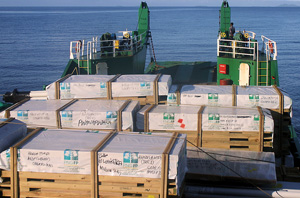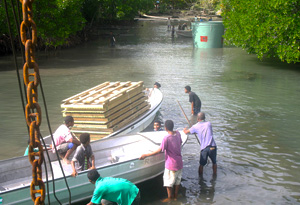AusAID has been selected as a Devex Top 40 Development Innovator based on a poll of thousands of Devex members, who collectively comprise one of the largest networks of global aid and international development professionals.
Announced on April 18, the Devex Top 40 Development Innovators are an impressive list of the world's leading donor agencies and foundations, development consulting companies, implementing NGOs and advocacy groups.
Devex is the largest network of development, health and aid workers in the world. It has more than 280,000 members and their online platform is accessed by more than 500,000 users from nearly every major development institution in the world.
AusAID was voted a Devex Top 40 Innovator in recognition of its approach to innovation in the Australian aid program. The challenge of lifting communities out of poverty often requires policy makers, aid workers and governments to think outside the square to generate new and relevant ideas.
Eighteen of Australia's 20 closest neighbours are developing countries and many are also fragile states. This places Australia in a unique position for a developed donor country as it tries to promote a secure and prosperous region. Helping our neighbours in the Pacific Island states, in particular, poses unique challenges and we continually look for new and better approaches.
The Australian aid program has received recognition for several areas of innovation.
- AusAID has supported the development of cheap mobile phone technology to communities in rural areas of the Pacific to deliver access to financial services, such as savings accounts and credit, so people can run their businesses and save for things like school fees. Mobile phone technology is also taking lifesaving health care and advice to women in remote areas of Bangladesh.
- The joint Australia-Indonesia Facility for Disaster Reduction uses science and research to develop practical measures to better identify areas most at risk of natural disaster. The facility helps to reduce the impact of disasters by giving people information about how to build safer houses and public buildings. It also helps shape training and planning for disaster managers across the region through partnerships with APEC, ASEAN and the United Nations.
- In Africa, a media partnership developing educational program content with national broadcasters is using radio, across the whole continent for the first time, to help halt the spread of HIV and AIDS from mothers to their children.
- In PNG, where remote terrain has prevented many children from getting access to school, the humble flat pack is being used to transport pre-fabricated schools to remote communities and attract qualified teachers to these areas.
Driving innovation in the future
With more than 50 per cent of AusAID's growing budget being delivered to fragile and conflict-affected states, future of innovation at AusAID is focused on efforts to better identify and support development priorities.
AusAID is committed to greater transparency and has introduced a number of important initiatives to ensure the public has more access to information about the aid program – what we do, how we do it and what we have achieved. This includes changes to the Freedom of Information Act, making it easier to access information, the establishment of the position of Information Commissioner and the requirement for government agencies to publish certain types of information as a matter of course.
AusAID is supporting the development of an International Charter for Mutual Accountability, involving the improvement of information exchange between donors and their recipients, so recipients have accessible methods through which to access information about how donors have used their funds.
Recruiting for innovation
As talent and partnerships help to drive innovation, AusAID adopts innovative and aligned HR practices to support the six stages of an employee's life cycle (Attract; Recruit; Select, Develop, Retain, Separate).
AusAID's workforce plan identifies a range of initiatives in recruitment, learning and development, performance management and career planning to ensure people have the capacity and the capability to effectively deliver the aid program and embrace change.
AusAID's learning and development strategy provides model learning pathways to strengthen a culture of staff development. The objective of a learning pathway is to signal the sorts of learning and development activities that are available and necessary in order to take up certain positions within the agency.




